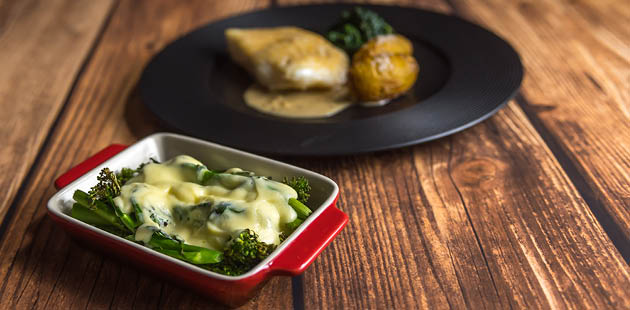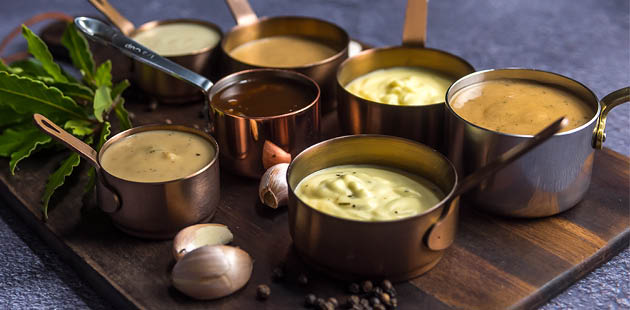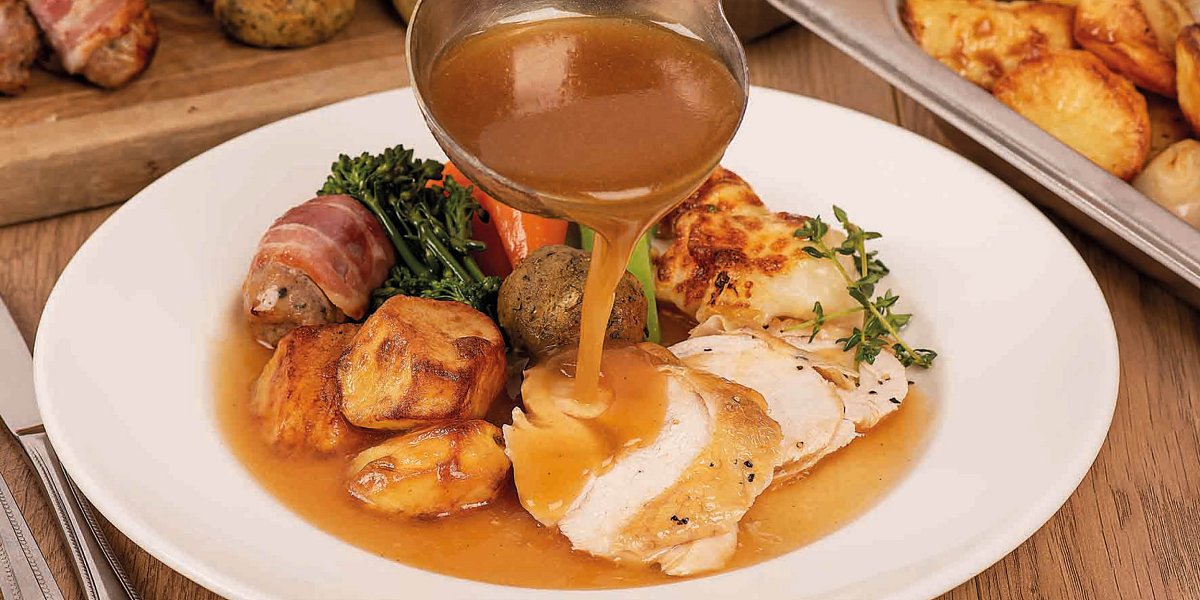Feature: Stocks, Sauces and Gravies
Whether it’s the gravy poured over the Sunday roast or the sauce to marinade meat, Care Home Catering updates care homes on how to make every last bit of stock and ingredient count to achieve a nutritional meal

When it comes to catering in care homes, a great deal of nourishment can be obtained from the stocks and sauces. Perfect for residents who are unable to maintain a solid diet, a lot of nutrients can be taken in from a hearty soup base or ladleful of gravy.
Having top quality stock in your soup along with vitamin-rich ingredients or homemade sauces can go a long way, especially if some dietary needs can bring restrictions to a menu.

The perfect pour over meals, side dishes and appetisers
IMPORTANT RE-SAUCES
Undoubtedly, good stock and sauces are important in any kitchen, especially when it comes to homemade food. But in care homes, utilising stock and assessing what truly goes into a sauce can be a hidden world of nutritional value and bursting flavour. Of course, stock can come in the form of bouillon or liquid. However it can also be created from blending ingredients together. Tailoring a stock from specific vegetables or broth can save money, waste and provide a smoother process to creating that final product.
“Quality stocks and sauces are staples in care home cooking as it is the best way to inject flavour into a dish and guarantee a delicious taste,” says Paul Saunders, marketing manager at Major International. “In fact, stocks and sauces form the basis of almost every dish, from a risotto to a stew, therefore they are essential in any kitchen, especially that of a care home. Care homes look to have consistently tasty meals that can be cooked in volume and provide nutritionally rich meals to residents. By ensuring they use quality flavoursome products, care homes can guarantee these requirements are met with every meal.”
Stocks and sauces play different roles in a dish. Where a sauce can elevate flavour both during and after cooking as well as creating texture and consistency, it can also be used as a marinade. A stock has a slightly alternative job. A lot of products can be used to create homemade stock and this poses a chance to pack in nutrients that might be otherwise lacking in a resident’s diet. By blending different ingredients together and not pouring away the water that the likes of pasta or rice is cooked in, a stock can be created that is relevant to the dish.
“Scratch cooking saves money over buying in,” says Gareth Newton, MD of BGL Rieber. “Bulk cooking of stocks, sauces and soups creates real value-for-money portions. And cooking in combi-kettles helps to pay the way by saving labour.
“Bulk cooking combination kettles get the most productivity out of chefs and kitchen staff. They are proven to be the most cost-efficient form of cooking in the commercial kitchen by a country mile. Creating new samples and flavours for residents is quickly done in a combi kettle. While they can cook hundreds of litres at once, combi kettles are just as good at cooking sample batches of 20 or 50 litres and can be ideal for healthcare catering because they give a chef complete control to create bulk meals, and meals for special diets without the need to stir or mix. It is done automatically.”
READY TO GO
Many care home kitchens might not have the time to create everything from scratch and ready-made products can be a time-saver that will elevate a dish perfectly well. Chefs can face difficulties when catering around various dietary requirements. Having one less thing to worry about can go a long way to ensuring a smoother run of the kitchen.
“Good quality pre-made sauces are a way to boost flavour in dishes, speed up preparation time, guarantee consistency, and tick the box when adapting a dish to suit residents’ different dietary needs, such as being gluten-free and allergen-free,” says Louise Wagstaffe, a chef at Premier Foods. “Many are also fortified to add extra nutrients to meals.”
When looking at sauces, it’s important to not only think of the ones that are poured or accompanied on a plate after the food is cooked, but also the ones that are used during cooking. When making dishes such as a cottage pie or lasagne, getting the best sauce for the meat to simmer in to bring as much flavour to the meal as possible is important.
“Using individual portions of pre-prepared stocks and sauces works well when you only need a small amount or for care home residents with dietary requirements,” explains Lauder. “Not only are they convenient and simple to use, they help to reduce waste too. They also help to cut the risk of contamination, which can have significant consequences for some residents.”

Central Foods provide seven frozen pre-packaged sauces that can amp up any meal
Regularly assessing the range of sauces in your kitchen can ensure menus are revamped, updated and bursting with as much flavour as possible. It ensures that you’re providing residents with as much versatility and expansive tastes from all cuisines. Ready-made sauces that can be refrigerated tend to have long expiry dates, which can provide the opportunity to get creative. When it comes to options such as sandwiches, salads or pastas that can be eaten cold, sauces can be used to provide the comfort that would usually come with good hot food. Even a base as classic as tomato can be elevated very simply with herbs, vegetables blended in and bouillon.
ENCOURAGEMENT
Encouraging residents to try new things can be a challenge for chefs. By starting off with well-known dishes such as tomato soup, and then elevating it, can go a long way. Classics garner interest. However, new dishes pique curiosity. Incorporating trends and seasonal associations for food can make the process a lot more fun and give residents a taste of nostalgia.
Using stock for wintery soups will create comfort for residents in their homes, while sauces can be incorporated to elevate a simple barbecue in the care home’s garden. Operators can look at topping sauces for burgers, marinades for meat, and dipping sauces for side dishes. Combinations can be trialled to create new flavours and bring more vibrancy to a plate.
Of course, a classic roast dinner is peak British culture. Best Betting Site research conducted across the UK shows that over 93% of people think that gravy is an essential part of their traditional Sunday roast for the rich taste it gives the dish. Just using well-loved favourites will incorporate sauces into the go-to weekly roast. Research also shows how the smell and taste of gravy incites comfort and nostalgia, which can be important to create in care homes.
Whether residents prefer it thick or thin, gathering stock to make the perfect gravy will give your roast a good boost to reincite enjoyment in a resident’s meal.











